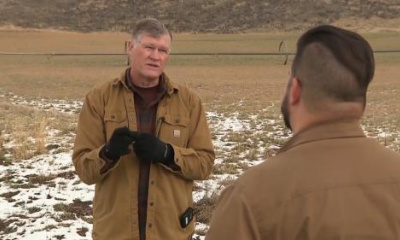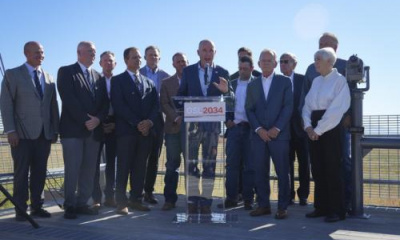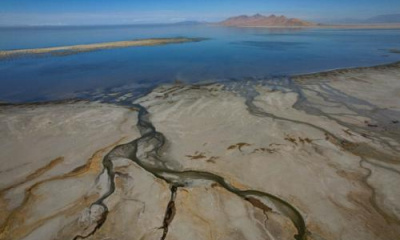SALT LAKE CITY — A pair of Utah divisions are close to unveiling new proposed rules that will regulate how new mineral extractors will return all the Great Salt Lake water they use in operations, implementing a law that Utah legislators passed earlier this year.
John Mackey, director of the Utah Division of Water Quality, provided members of the Utah Legislative Water Development Commission an update on the efforts during a meeting Tuesday. He said that the division expects to release a draft of the rule as early as October, going through a public comment process before it could be implemented at the start of 2024.
Both the Utah Division of Water Quality and Utah Division of Forestry, Fire and State Lands are currently working on crafting separate rules that outline how HB513, a bill the Utah Legislature passed in March to address mineral extraction at the Great Salt Lake, is regulated. The rules are tied to a part of the law that ensures any extraction is "nondepleting," Mackey said.
"They're supposed to put it all back," he told KSL.com after the meeting. "I don't know if there's a plus or minus — that's some that (Utah land managers are) working on — but the goal is you take out 100, you put back in 100."
Mackey explains that the Utah Division of Water Quality's rule aims to ensure that all mineral extraction processes are "protective" of the environment, calling it a "companion" to permit requirements under the Utah Water Quality Act. It would require mineral extractors to submit an environmental operations process evaluation that details how this will be achieved and outlines any possible effects.
It would also require other vital details tied to water storage and discharge, chemical balance and the lake's biology, as well as how the company plans to monitor its operations.
A draft version is scheduled to be made public in mid-October, sparking a public comment period that could last through the end of the year. It may be enacted by the end of January 2024, according to a timeline presented Tuesday.
The division also plans to coordinate its rule with the Utah Division of Forestry, Fire and State Lands as it goes through the same process.
"We want to make sure that when the rules roll out that they're about lined up, that they're available and understandable," Mackey said. "It's not a moving target for an applicant. ... We want to make sure that we're consistent."
The law and any rules tied to it only apply to new mineral extraction entities and agreements, meaning that it doesn't apply to existing agreements granted to businesses like Cargill, Compass Minerals, Morton Salt or U.S. Magnesium, which often extract minerals through evaporation.
New prospective mineral extraction companies are already planning for the new rules. Waterleaf Resources, a subsidiary of California-based Lilac Solutions, unveiled plans to take in 225,000 acre-feet of the Great Salt Lake's water, using a process that it says absorbs lithium minerals and sends the remaining water and minerals back into the lake, the Salt Lake Tribune reported last week.
Utah Division of Forestry, Fire and State Lands officials told the outlet that they plan to have a process in place for new extractors to prove their technology before allowing them to extract water.
It's also possible that mineral companies grandfathered into old rules could face changes in the future.
Updated lake levels
Utah House Majority Leader Mike Schultz, R-Hooper, told KSL Newsradio last month that he wants to introduce legislation tied to annual water rights held by mineral companies after Compass Minerals conducted lithium extraction operations in the lake's northern arm without state approval earlier this year — though the company officials contend that they did nothing wrong.
"We want to have a good partnership. (But) we don't want the state of Utah or the Great Salt Lake to be taken advantage of," Schultz said. "We can find that balance, but we just need everybody to come together."
The Great Salt Lake's water levels fell to an all-time low in 2022 before Utah's record snowpack this year helped raise parts of the lake by several feet. Despite its rebound, some parts of the lake are once again nearing all-time lows.
Per U.S. Geological Survey data, the lake's northern arm, near Saline in Box Elder County, is now back to an elevation of 4,189 feet, only 0.1 feet above its all-time low. The lake's southern arm is currently listed at 4,192.4 feet elevation, about 4 feet above its record low but 5½ feet below levels that are considered healthy for the lake.








